Ancient Ostia, the lesser-known cousin of the famous Pompeii, offers a captivating glimpse into the vibrant daily life of ancient Rome. This well-preserved port city, located just outside the capital, boasts a remarkable array of remarkably intact structures – from bustling taverns and luxurious spas to grand theaters. With a knowledgeable local guide leading the way, visitors can step back in time and enjoy the captivating history of this once-thriving commercial hub, whose significance rivals even the renowned Roman Forum. What secrets and stories await those who choose to explore this other Pompeii?
Key Points
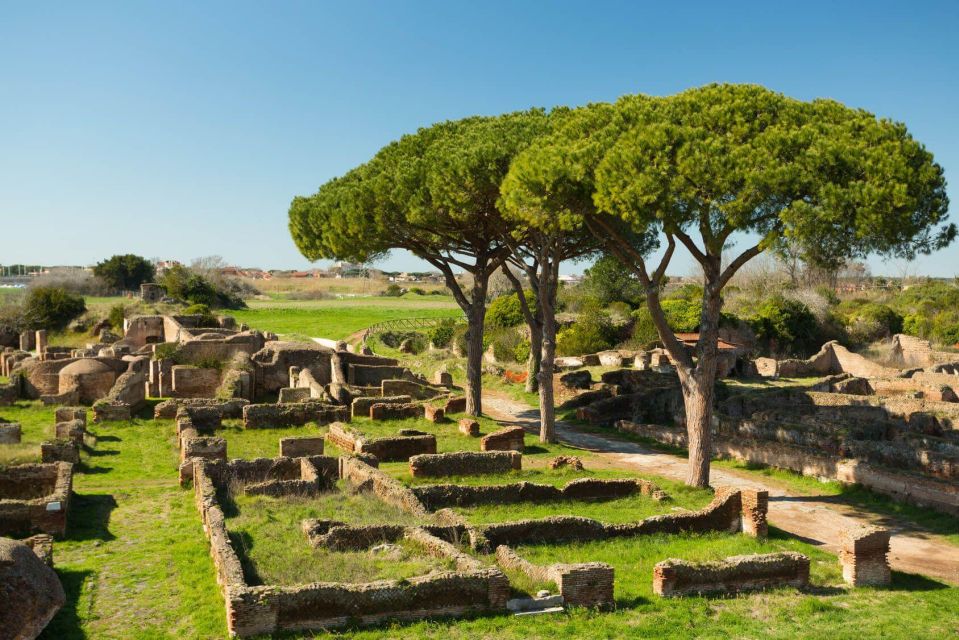
• Explore the remarkably well-preserved ruins of Ancient Ostia, often referred to as the ‘Second Pompeii,’ with a knowledgeable local guide.
• Discover the site’s impressive conservation and get a unique glimpse into the daily life of ancient Romans through its taverns, spas, apartments, and theaters.
• Marvel at the exceptional preservation of Ostia Antica’s architectural features, surpassing even the renowned Roman Forum, along the Decumanus Maximus.
• Enjoy the ancient atmosphere and gain a deeper understanding of Ostia’s significance as a thriving commercial hub in ancient Rome.
• Contrast the experience of Ostia Antica with the Roman Forum, as Ostia offers a more comprehensive insight into the lives of ordinary Romans.
It's also worth checking out some other tours and experiences nearby.
Overview of Ancient Ostia
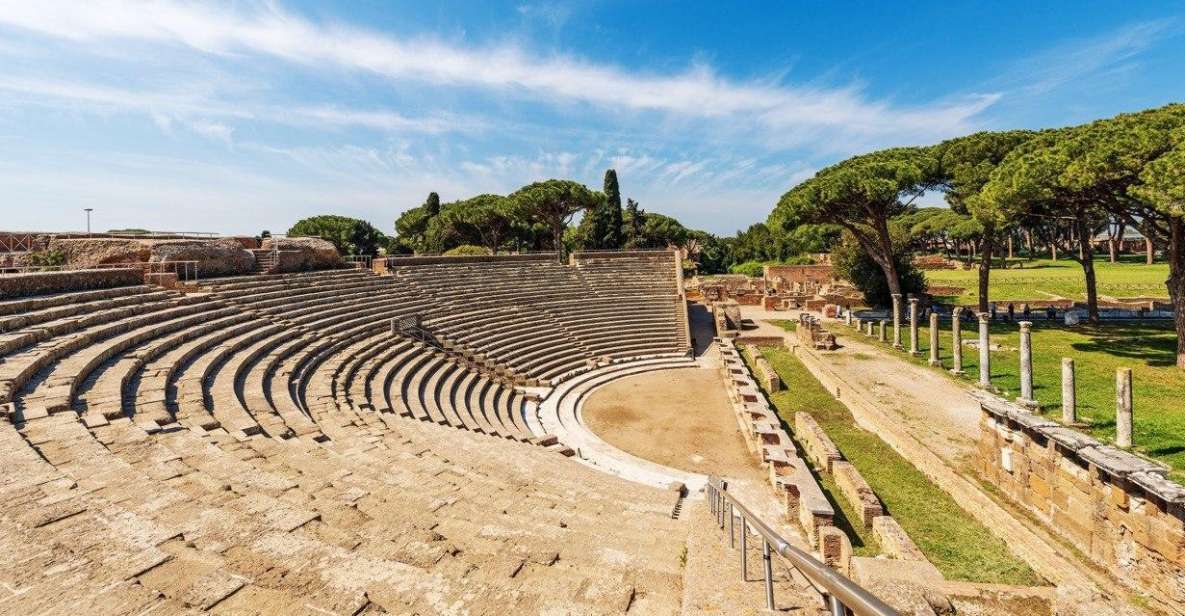
Ostia Antica, also known as the ‘second Pompeii,’ was an ancient port city located at the mouth of the Tiber River, just 30 kilometers from the heart of Rome.
Founded in the 4th century BC, this once-thriving commercial hub boasted well-preserved ruins that surpass even those of the Roman Forum.
Visitors can explore the site’s remarkably intact structures, including taverns, spas, apartments, and theaters, which offer a unique glimpse into the daily life of ancient Romans.
The impressive conservation of Ostia Antica has earned it a reputation as a must-see archaeological destination, rivaling the famous ruins of Pompeii in its ability to transport visitors back in time.
Itinerary and Tour Details
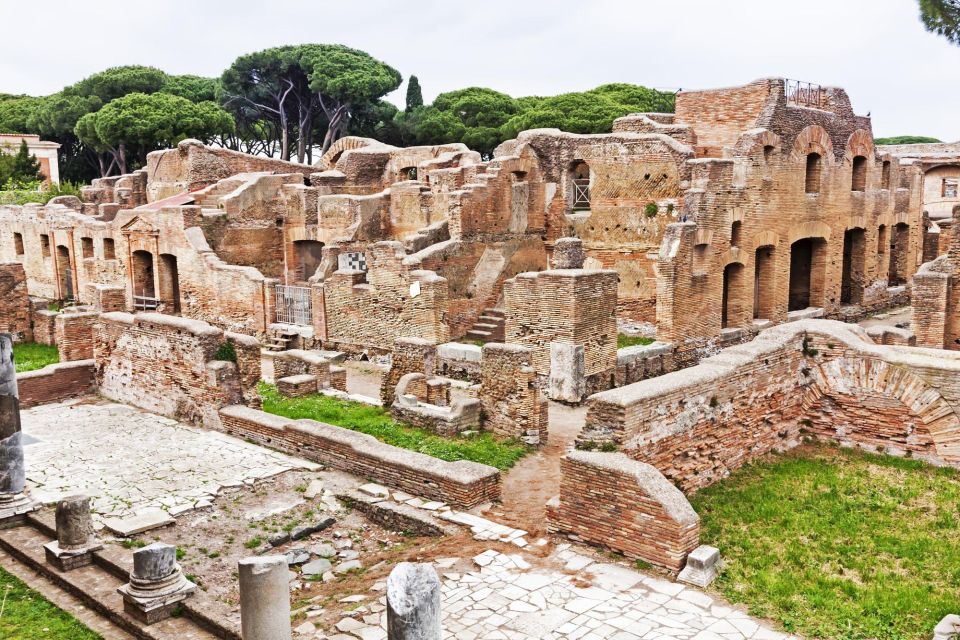
Visitors can look forward to an engaging experience, as the itinerary takes them through the well-preserved ruins of this ancient port city.
A comfortable and elegant minivan will transport them to the archaeological site of Ostia Antica, where a knowledgeable local guide will lead them on a captivating tour.
Travelers will retrace the history of Ostia, once a bustling hub, by walking along the Decumanus Maximus, the main street. Along the way, they’ll hear fascinating stories from the past and gain a deeper understanding of the site’s significance.
The tour offers a unique opportunity to take in the ancient atmosphere and marvel at the exceptional conservation of the ruins, rivaling even that of the Roman Forum.
History of Ostia Antica
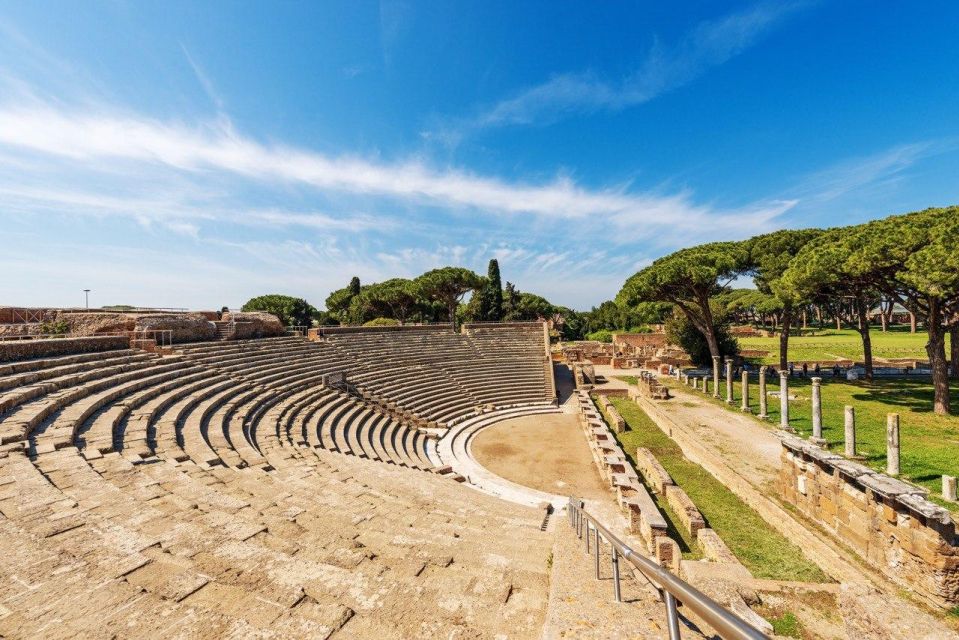
Originally founded in the 4th century BC, Ostia Antica was a thriving port city that played a crucial role in ancient Rome’s economy and trade network.
As one of the most important archaeological sites in Italy, the remarkably well-preserved ruins of this ancient settlement offer visitors a unique glimpse into the daily life and activities of its inhabitants.
Over the centuries, Ostia Antica grew to become a bustling commercial hub, home to a diverse population of merchants, traders, and artisans.
The site’s architectural remains, including large apartment blocks, theaters, and public baths, provide a fascinating insight into the urban landscape and infrastructure of this ancient port town.
Exploring the Main Street
As visitors stroll along the Decumanus Maximus, the main street of Ostia Antica, they’ll be enchanted by the well-preserved architectural features that line this ancient thoroughfare.
The Decumanus Maximus was the heart of the bustling port city, and it’s easy to imagine the lively scenes that unfolded here centuries ago.
Visitors can marvel at the towering columns, ornate facades, and intricate mosaics that adorn the buildings along the street.
Along the way, the local guide will share captivating stories about the everyday lives of Ostia’s residents, from the merchants who ran thriving businesses to the common people who called this vibrant city home.
Well-Preserved Ancient Ruins
The ruins of Ostia Antica showcase an astonishing level of preservation, surpassing even the renowned Roman Forum.
Wandering through the site, one is struck by the exceptional state of the ancient structures, which include well-preserved:
- Taverns, where ancient Romans would gather for food and drink
- Spas, where they’d relax and unwind
- Apartments, providing a glimpse into the daily lives of the city’s residents
- Theaters, where the community would come together for entertainment
The conservation of these ruins is truly remarkable, offering visitors a tangible connection to the vibrant port city that thrived millennia ago. Ostia Antica’s well-preserved ancient ruins provide an unparalleled window into the past.
Ostia Antica Vs. Roman Forum
While the Roman Forum is renowned for its historical significance, the ruins of Ostia Antica offer a unique perspective on ancient Roman life, surpassing even the renowned site in terms of preservation and insight into the daily activities of the city’s inhabitants.
Whereas the Forum provides a glimpse into the administrative and religious heart of Rome, Ostia Antica allows visitors to walk through the bustling commercial port that served as the economic backbone of the empire.
From well-preserved taverns and apartments to sophisticated bath complexes, the ruins of Ostia paint a vivid picture of how ordinary Romans lived, worked, and socialized, making it a must-see destination for those seeking a deeper understanding of the ancient world.
Inclusions and Exclusions
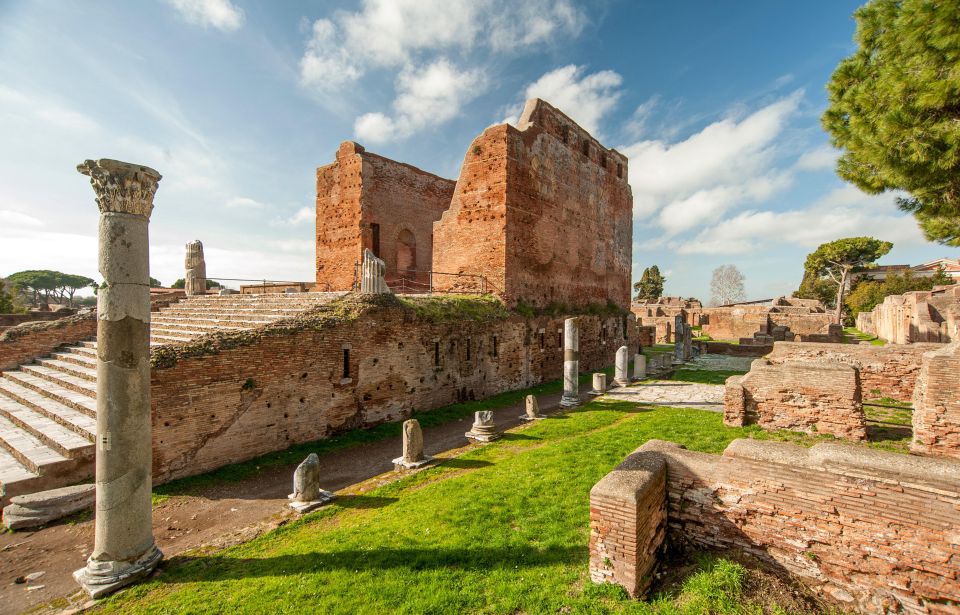
This tour package includes pickup and drop-off, a driver, a guided tour with a local guide, and entrance tickets for the archaeological site of Ostia Antica. However, it excludes gratuities and lunch.
The tour offers the opportunity to explore this ancient port city in a hassle-free manner. Guests can look forward to:
- Comfortable and elegant transportation in a minivan
- Insights from a knowledgeable local guide
- Exploring well-preserved ruins, including taverns, spas, and theaters
- Walking along the Decumanus Maximus, the main street of Ostia Antica
While meals and tips aren’t covered, this tour provides a comprehensive experience to take in the captivating history of this ‘Second Pompeii.’
Getting to Ostia Antica
Reaching the ancient ruins of Ostia Antica is a straightforward affair, as the site lies just 30 kilometers from the heart of Rome.
Visitors can easily access the site by taking a comfortable minivan, which provides a hassle-free transportation option. The journey takes approximately 30 minutes, allowing travelers to sit back, relax, and admire the scenic countryside.
Once at the site, visitors are greeted by the well-preserved ruins, which offer a glimpse into the rich history of this ancient port city.
With a knowledgeable local guide leading the way, visitors can explore the site and uncover the fascinating stories that lie within the ancient walls of Ostia Antica.
Here's a few more nearby tours and experiences we think you'll like.
- Skip the Line: Vatican Museums & Sistine Chapel With St. Peters Basilica Access
- Expert Guided Tour of Colosseum Underground OR Arena and Forum
- The Original Roman Crypts and Catacombs Tour With Transfers
- Tuscany Guided Day Trip From Rome With Lunch & Wine Tasting
- Colosseum Underground and Ancient Rome Small Group – 6 People Max
- Skip-the-Line Vatican, Sistine Chapel & St. Peters | Small Group
Frequently Asked Questions
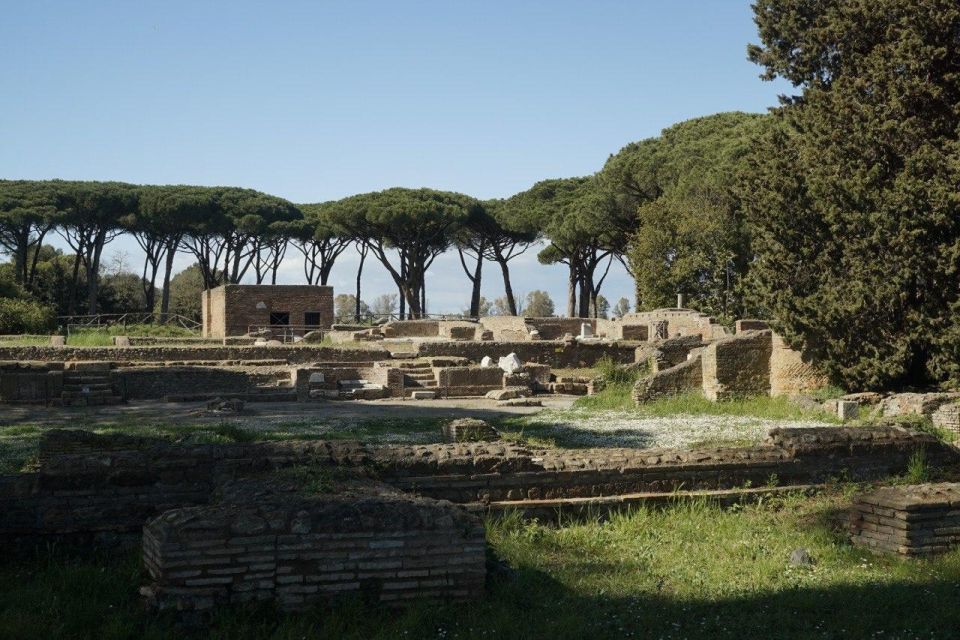
What Is the Best Time of Year to Visit Ostia Antica?
The best time to visit Ostia Antica is during the spring or fall when the weather is mild and pleasant. Summers can be hot and crowded, while winters are colder with shorter daylight hours, making it less ideal for exploring the expansive site.
Can I Take Photos Inside the Archaeological Site?
Yes, visitors are generally permitted to take photos inside the Ostia Antica archaeological site. However, flash photography may be prohibited in some areas to protect the delicate ruins. Respect any signage or instructions from site staff regarding photography.
Are There Any Restaurants or Cafes On-Site?
There are a few on-site cafes and restaurants where visitors can enjoy light meals and refreshments during their exploration of the archaeological site. These dining options provide opportunities to rest and refuel amidst the ancient ruins.
How Long Does the Guided Tour Typically Last?
The guided tour of Ostia Antica typically lasts around 2-3 hours, allowing visitors to explore the well-preserved ancient ruins and learn about the site’s rich history from a knowledgeable local guide.
Can I Explore the Site on My Own After the Guided Tour?
Yes, visitors can explore the archaeological site of Ostia Antica on their own after the guided tour. The site’s well-preserved ruins allow for independent exploration and discovery at one’s own pace.
Not for you? Here's more of our most recent tour reviews happening neaby
- From Hanoi: Sapa – Cat Cat – Fanxipan Peak– Moana 3D2N
- Rome: Colosseum and Roman Forum Small Group Tour (10 People)
- Rome: Pantheon Limited-Time-offer Audioguide
- Rome: 2-In-1 Train & Bus From/To Castel Gandolfo
- Rome Pantheon Audio Guide (No Ticket)
- Rome: Video Tour Guides in ENG at Your Own Pace
- Rome: Pantheon Skip-The-Line Entry Ticket With Audioguide
- Rome: Pantheon Skip-the-Line Entry
- Rome: 2-In-1 Train & Bus Ticket To/From Valmontone Magicland
- Rome: Highlights App Guided Tour With Puzzles
- Rome: Luggage Storage Service Close to the Pantheon
- Rome: Luggage Storage Service Close to the Colosseum
- Luggage Storage Close to Vatican Museums and Sistine Chapel
- Luggage Storage Near Roma Termini Station
- Luggage Storage Rome City Centre
Recap
Ancient Ostia, the ‘Second Pompeii,’ offers a captivating glimpse into the daily life of ancient Romans.
Visitors can explore the well-preserved ruins, including taverns, spas, and theaters, with a knowledgeable local guide.
The site’s exceptional conservation and historical significance rival even the renowned Roman Forum, making it a must-visit destination for those seeking to enjoy the vibrant atmosphere of this once-thriving commercial hub.
